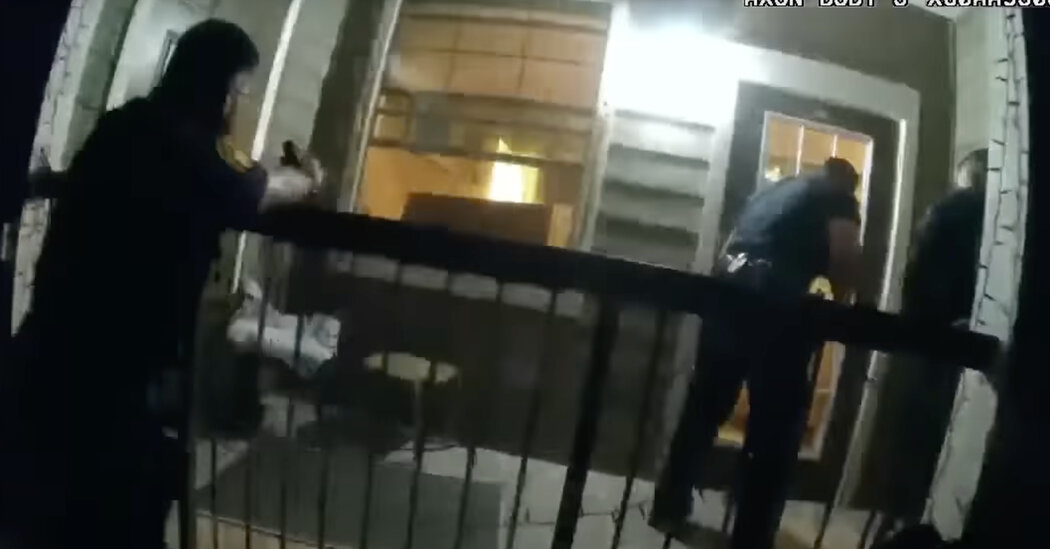The Dire Consequences of Depleting California’s Groundwater
In an average year in California, roughly 40 percent of the state’s water supply comes from groundwater — the water that fills a well, naturally stored beneath our feet in aquifers. In a dry year, the share of the state’s water needs that are met from this hidden resource can exceed 60 percent.
In other words, groundwater is vital, here and across the nation. Drawing on underground water allowed vast cities to emerge and turned the nation into an agricultural powerhouse.
But many of America’s aquifers are being severely depleted, and quite a few of them won’t be able to bounce back, an investigation by several of my colleagues has found.
By analyzing data from tens of thousands of groundwater monitoring wells, The New York Times created a comprehensive database of U.S. groundwater levels. The findings are disturbing: Over the past 40 years, the water levels in most aquifers have fallen, because water has been pumped out faster than nature has been able to replenish them.
“The consequences of groundwater being depleted — it’s almost impossible to adequately stress just how important this,” Christopher Flavelle, a climate reporter who helped lead the project, told me.
You can read The Times’s investigation here.
The dwindling of the groundwater supply could threaten America’s status as a food superpower, as sustaining industrial-scale agriculture becomes more difficult. It could also slow home-building: This recently occurred around Phoenix, where officials said there wasn’t enough groundwater for new homes that rely on aquifers.
The depletion can damage infrastructure, as has happened in California and other states. Overpumping of groundwater has caused roads to buckle, foundations to crack and fissures to appear in the earth.
Yet the groundwater crisis hasn’t typically gotten the attention it merits. “There’s truth to the general maxim that something that’s out of sight is out of mind,” Chris told me. “And I think even in the context of climate change and water, there’s so much to worry about that’s more in your face.”
There are serious risks to overpumping groundwater, even beyond diminishing the water supply.
Researchers have found a link between groundwater depletion and arsenic contamination in the San Joaquin Valley. As aquifers closer to the surface are depleted, wells must be drilled to deeper ones. And evidence suggests that drawing water from deeper in the ground increases the likelihood of arsenic contamination.
In coastal areas, overpumping can accelerate saltwater intrusion — seawater seeping into and contaminating what had been a freshwater aquifer — which can eventually make the water unusable.
The federal government does not regulate groundwater extraction. In 2014, California lawmakers passed a landmark groundwater management law that is meant to prohibit unlimited drawdowns of aquifers, but the state is still working on putting those rules into effect.
“California is a bit of a test case,” Chris told me.
For more:
Where we’re traveling
Today’s tip comes from Karen Spratt, who lives in Petaluma. Karen recommends visiting the Hollywood Bowl:
“There is no better place for an outdoor amphitheater. In my 70 years, I have been there countless times. The drive from the high desert to the Hollywood Bowl is a long one, but well worth the trip. At first I accompanied my parents to classical concerts. In my teens, I saw the Mamas and Papas (with Jimi Hendrix as the opener!), Jefferson Airplane and Sonny and Cher.
The drive is even farther from the Bay Area, but still worth it. To sit in that gorgeous place and watch Joshua Bell conduct ‘The Four Seasons’ while he also plays the violin!”
Tell us about your favorite places to visit in California. Email your suggestions to [email protected]. We’ll be sharing more in upcoming editions of the newsletter.
And before you go, some good news
Baseball fans across Southern California celebrated last weekend after a team from El Segundo won the Little League World Series in a close game on Sunday.
The 6-5 win against Pabao Little League of Willemstad, Curaçao, came after a nail-biting tie in the final inning, The Los Angeles Times reports. But the team’s woes were short-lived once its leading home-run hitter, Louis Lappe, stepped up to the plate and sent a ball over the left field wall.
It was the first title for a Los Angeles County team in three decades, and the first for a California team since 2011. The state now has eight Little League championship titles, the most of any state since the tournament began in 1947.
“This was such an amazing experience, and I feel like their win is a win for all of us,” Nicole Alpert, who watched Sunday’s game at a bar in El Segundo, told The Los Angeles Times. “It’s been so lively around town, to believe in them, to believe in each other. It’s all so positive.”
Thanks for reading. I’ll be back tomorrow. — Soumya
P.S. Here’s today’s Mini Crossword.
Briana Scalia and Maia Coleman contributed to California Today. You can reach the team at [email protected].
Sign up here to get this newsletter in your inbox.


